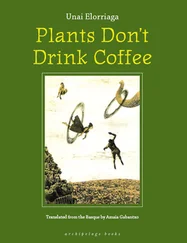Physiology of Salt Stress in Plants
Здесь есть возможность читать онлайн «Physiology of Salt Stress in Plants» — ознакомительный отрывок электронной книги совершенно бесплатно, а после прочтения отрывка купить полную версию. В некоторых случаях можно слушать аудио, скачать через торрент в формате fb2 и присутствует краткое содержание. Жанр: unrecognised, на английском языке. Описание произведения, (предисловие) а так же отзывы посетителей доступны на портале библиотеки ЛибКат.
- Название:Physiology of Salt Stress in Plants
- Автор:
- Жанр:
- Год:неизвестен
- ISBN:нет данных
- Рейтинг книги:4 / 5. Голосов: 1
-
Избранное:Добавить в избранное
- Отзывы:
-
Ваша оценка:
- 80
- 1
- 2
- 3
- 4
- 5
Physiology of Salt Stress in Plants: краткое содержание, описание и аннотация
Предлагаем к чтению аннотацию, описание, краткое содержание или предисловие (зависит от того, что написал сам автор книги «Physiology of Salt Stress in Plants»). Если вы не нашли необходимую информацию о книге — напишите в комментариях, мы постараемся отыскать её.
Discover how soil salinity affects plants and other organisms and the techniques used to remedy the issue Physiology of Salt Stress in Plants,
Physiology of Salt Stress in Plants
Physiology of Salt Stress in Plants
Physiology of Salt Stress in Plants — читать онлайн ознакомительный отрывок
Ниже представлен текст книги, разбитый по страницам. Система сохранения места последней прочитанной страницы, позволяет с удобством читать онлайн бесплатно книгу «Physiology of Salt Stress in Plants», без необходимости каждый раз заново искать на чём Вы остановились. Поставьте закладку, и сможете в любой момент перейти на страницу, на которой закончили чтение.
Интервал:
Закладка:
However, during salt stress, a higher concentration of salt ions in soil and continuous intrusion of salt ions to the root cells, the extrusion of Na +by SOS1 is not sufficient to maintain the cellular homeostasis of the Na +. Thus, the plants sequester the excess Na +into the vacuole by the vacuolar Na +/H +antiporter (NHX1), loaded to the xylem vessel to distribute it all over the plants by nonselective cation channel (NCCS), SOS1, high‐affinity K +family transporter 2 (HKT2) or cation‐chloride cotransporter (CCC), or retrieved to the phloem from leaf cells by HKT1 (Zhao et al. 2020). The general limit of external salt concentration for glycophytes is 0.5% of seawater (≈86 mM NaCl) above which the stress‐coping mechanism fails, and severe yield loss in plants are reported (Bose et al. 2017). We discuss the effect of the salt stress on different compartments of the plant cell and their physiology or metabolic activities in the following sections.
2.4.1 Effect of Salt Stress on Chlorophyll Biosynthesis, Chloroplast Functioning, and Photophosphorylation
In addition to photosynthesis, the chloroplast is the hub of several other metabolic activities: the biosynthesis of chlorophyll, carotenoid, ABA, vitamins, amino acids, and fatty acids and lipids (Zhao et al. 2020). Therefore, any environmental stress affects the metabolic pathways that operate in the chloroplast. Minutes after the salt stress, the stomata are closed, suppressing the exchange of the CO 2resulting in photosynthesis inhibition. In the light reaction of photosynthesis, the electron generated from the photo‐oxidation of water passes through the electron transport chain (ETC) on the thylakoid membrane to the electron acceptor proteins and molecules in the stroma. The transfer of electrons through the ETC generates a proton gradient across the thylakoid membrane, creating a proton motive force (PMF). This PMF drives the function of the chloroplast ATP synthase for the synthesis of ATP from the ADP, a process defined as the photophosphorylation (Sudhir and Murthy 2004). The plants use the ATP produced by the photophosphorylation in their metabolic pathways that operates in the chloroplast.
2.4.1.1 Chlorophyll Biosynthesis in Salt Stress
The chlorophyll biosynthesis in plants occurs in the plastid involving more than 17 enzymes encoded by the nucleus (Pattanayak and Tripathy 2002). Various environmental stresses, including salt stress, downregulate the chlorophyll biosynthesis. Exposure of young and etiolated rice seedlings with salt stress showed that the decrease in the chlorophyll biosynthesis was the result of the reduced transcript expression and protein abundance of biosynthetic enzymes 5‐aminolevulinic acid (ALA) dehydratase, porphobilinogen deaminase, coproporphyrinogen III oxidase, protoporphyrinogen IX oxidase, Mg‐protoporphyrin IX chelatase, and protochlorophyllideoxidoreductase (Turan and Tripathy 2015). Although ALA synthesis decreased, the gene/protein expression of glutamyl‐tRNA reductase increased, suggesting that it may play a role in acclimation to salt stress. In mature Sunflower plants, the salt‐stress‐induced downregulation of chlorophyll biosynthesis in leaves showed a correlation with the reduced level of glutamate and 5‐ALA accumulation (Santos 2004). Salinity downregulates the expression of chlorophyllide‐ a ‐oxygenase (CAO), which is involved in Chl b synthesis. The reduced Chl b synthesis contributes to an increased Chl a/b ratio observed in salt stress (Pattanayak and Tripathy 2002). The adaptation of plants to downregulate the chlorophyll biosynthesis is essential for protecting the chloroplast from the photo‐oxidative damage by the ROS generated by light and triplet chlorophylls in the absence of photosynthesis (Turan and Tripathy 2015). Thus, the downregulation of chlorophyll biosynthesis might be part of the stress avoidance and protection mechanism in plants.
2.4.1.2 Salt Stress Affects Chloroplast Function
Salt stress affects chloroplast more severely than another organelle, as the ROS increases rapidly due to chlorophyll triplet and oxygen molecules produced due to the photolysis of water, leading to its destruction. The salt stress leads to increased Na +and Cl −concentrations and decreased K +concentration inside chloroplasts resulting in the swelling of thylakoid and unstacking of grana, thereby altering the photosynthetic structure (Santos 2004). The regulation of K +and Cl −across the thylakoid membrane is important in regulating the pH difference, which regulates the photoprotective nonphotochemical quenching mechanism and optimal photosynthesis (Finazzi et al. 2015). Any sort of disorder in this mechanism due to insufficient K +during salt stress in the chloroplast may hamper its photoprotective mechanism. Accumulation of anions in the chloroplast affects both the acceptor and donor sides of photosystem II (PSII) by binding to a specific site on PSII (Jajoo et al. 1994, 2005). When the anions permeate the membrane during the salt stress, the influx of protons to balance the resultant charge causes structural reorganization in thylakoid membranes resulting in energy redistribution. All these salt stress components ultimately upset the ionic balance within chloroplasts, resulting in poor photosynthetic performance and reduced growth and yield. A shift in anion balance has shifted the solar energy distribution from PSII to PSI, affecting the function of the water‐splitting complex and electron transport to and from the plastocyanin (Singh‐Rawal et al. 2011). At the same time, soluble cations also cause alteration in the excitation energy transfer in the photosynthetic system at physiological temperatures by affecting several primary processes in thylakoids: initial energy distribution or “spillover” from PSII to PSI and rate constant of nonphotochemical quenching (Wong et al. 1980).
During salt stress, the maximum quantum yield of PSII (Fv/Fm), photochemical quenching coefficient, and electron transport rate decreases, whereas nonphotochemical quenching increases (Yang et al. 2020), possibly due to unstacking of the grana. The reduced photochemistry and carbon fixation lead to an increase in ROS production which are potent in damaging chloroplast and its membrane (Hernández et al. 1995). To cope with this situation, the level of enzymatic (catalase, ascorbate peroxidase, and glutathione reductase) and nonenzymatic (ascorbate, total carotenoids, phenolics, and flavonoids) antioxidants increases (Taïbi et al. 2016). The ROS production, especially H 2O 2, inhibits the synthesis of D1 protein (Murata et al. 2007). Salt stress modifies the Q Bplastoquinone binding site of D1 at the acceptor side. It stabilizes oxygen‐evolving complex (OEC) in S2 state at the donor side by salt‐induced migration of the PsbO subunit of PSII to the lumen (Sasi et al. 2018). This change in the PSII and OEC slows the water‐splitting process, which may be part of the plant’s defense strategy. The enzyme plastoquinol terminal oxidase (PTOX) in halophyte E. salsugineum chloroplast minimizes the damage by diverting electrons from plastoquinol to oxygen and producing water molecules (Stepien and Johnson 2009).
Salt has an essential role in maintaining enzyme activity. If the salt concentration is below optimum, the charged amino acid side chains of the enzyme will attract each other, thus denaturing it. At the same time, if the salt concentration is too high, regular interaction of charged groups will be blocked, new interactions will occur, and again the enzyme will denature. Some of the enzymes involved in the Calvin–Benson–Bassham cycle share their functional activity with the chloroplast glycolytic pathway. Therefore, one of the direct effects of ionic stress is the denaturation of enzymes involved in the Calvin–Benson–Bassham cycle, leading to the transduction of signals for the upregulation or downregulation of several genes encoding enzymes involved in photosynthesis. We will discuss the effect of salt stress on their activity in the following glycolytic section.
Читать дальшеИнтервал:
Закладка:
Похожие книги на «Physiology of Salt Stress in Plants»
Представляем Вашему вниманию похожие книги на «Physiology of Salt Stress in Plants» списком для выбора. Мы отобрали схожую по названию и смыслу литературу в надежде предоставить читателям больше вариантов отыскать новые, интересные, ещё непрочитанные произведения.
Обсуждение, отзывы о книге «Physiology of Salt Stress in Plants» и просто собственные мнения читателей. Оставьте ваши комментарии, напишите, что Вы думаете о произведении, его смысле или главных героях. Укажите что конкретно понравилось, а что нет, и почему Вы так считаете.












